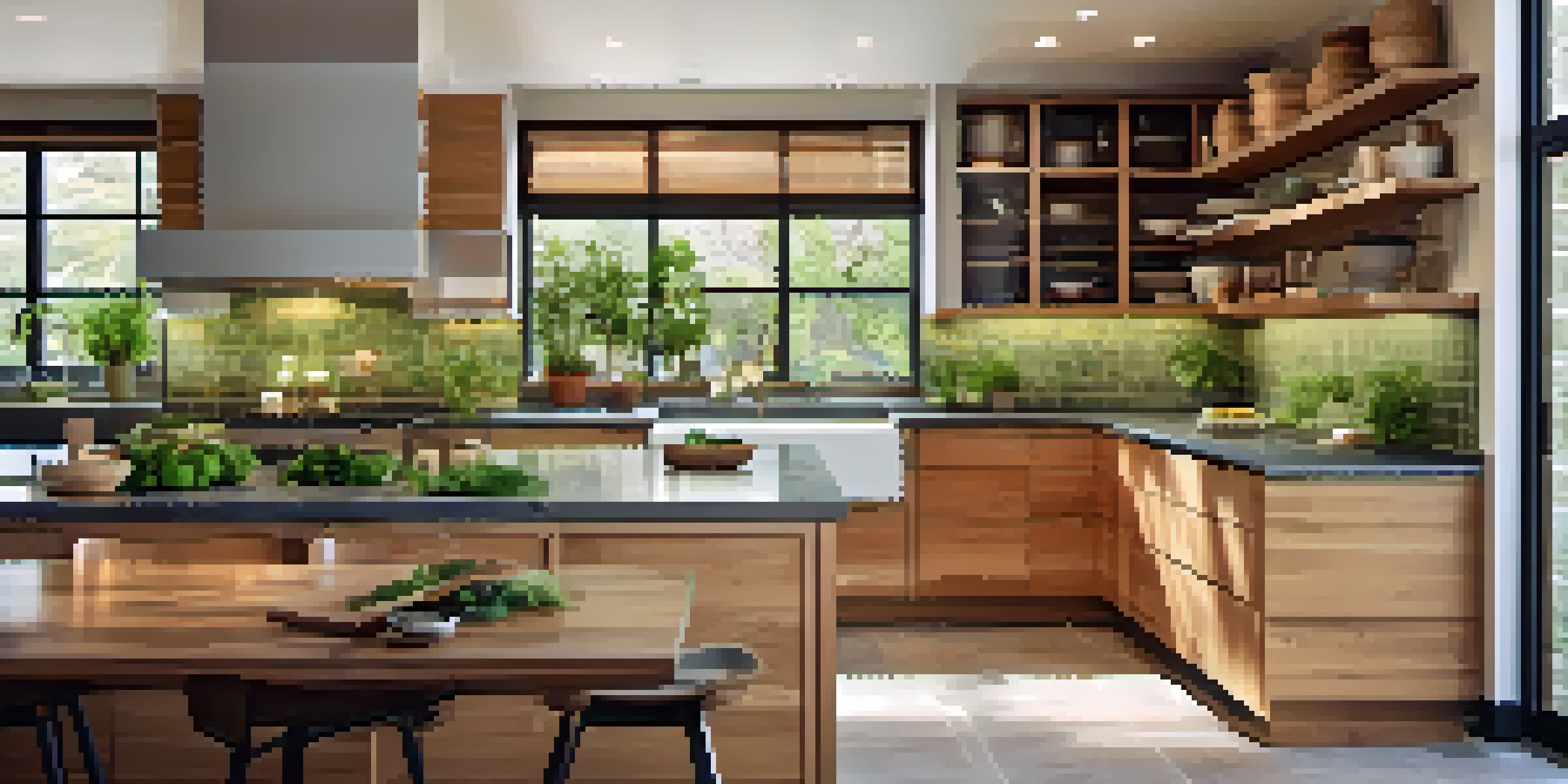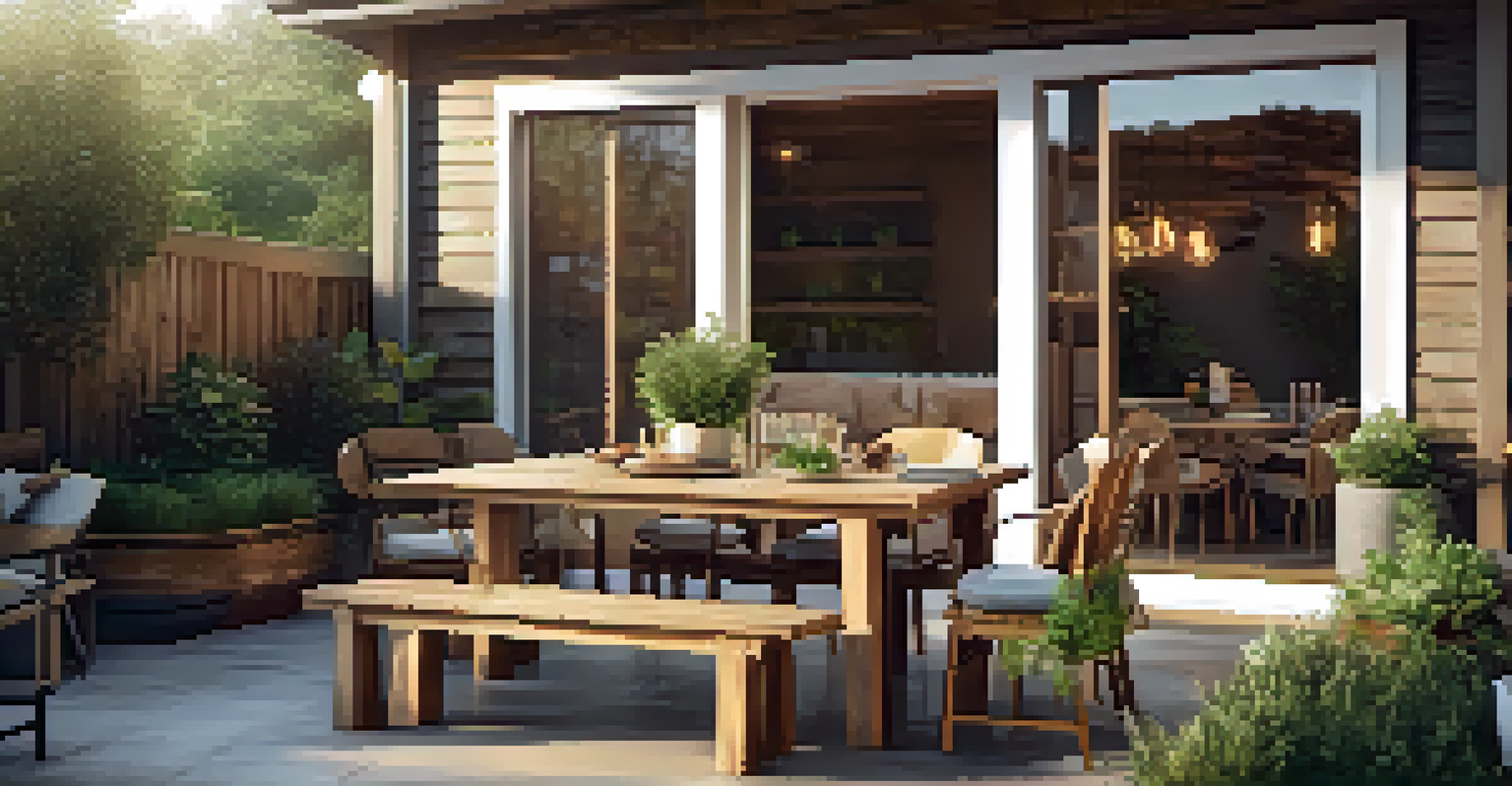Choosing Sustainable Materials for Your Renovation

Understanding Sustainable Materials and Their Importance
Sustainable materials are resources that have minimal impact on the environment during their lifecycle. They are sourced responsibly, produced with eco-friendly processes, and often designed to be reused or recycled. By choosing these materials, you help reduce waste and lower your carbon footprint, making a positive impact on our planet.
The greatest threat to our planet is the belief that someone else will save it.
For instance, bamboo is a popular sustainable option as it grows rapidly and requires little water. Similarly, reclaimed wood not only adds character to your space but also diverts waste from landfills. Understanding the benefits of these materials can inspire you to think differently about your renovation choices.
Ultimately, selecting sustainable materials means you're investing in a healthier future for both your home and the environment. It’s a win-win situation where you can enjoy beautiful spaces while contributing to ecological preservation.
Evaluating Material Lifespan and Durability
When choosing materials, consider their lifespan and durability. Sustainable materials should not only be eco-friendly but also long-lasting, ensuring you won’t have to replace them frequently. For example, metals like steel and aluminum are highly durable and can often be recycled at the end of their life cycle.

Think of it this way: investing in high-quality materials might mean a higher upfront cost, but it saves you money in the long run. You won’t need to renovate again anytime soon, which also means less waste and fewer resources used. It’s like buying a good pair of shoes – they might cost more initially, but they last much longer than cheaper options.
Choose Sustainable Materials
Opting for sustainable materials like bamboo and reclaimed wood significantly reduces waste and supports environmental preservation.
Incorporating durable materials into your renovation plan is a smart way to balance sustainability with practicality. Always read reviews or consult professionals to ensure that the materials you choose will stand the test of time.
Exploring Local Sourcing Options
Local sourcing is a fantastic way to secure sustainable materials for your renovation. By purchasing from nearby suppliers, you reduce transportation emissions and support your local economy. Plus, local materials often have a lower environmental impact since they don’t need to be shipped over long distances.
Sustainability is no longer about doing less harm. It's about doing more good.
For example, if you’re in a region known for its natural stone, consider using locally-sourced stone for your countertops or flooring. This not only enhances your home’s aesthetic but also gives you a unique connection to your area. It’s like giving a nod to the beauty of the environment right outside your door.
In addition to supporting local businesses, sourcing materials locally can also lead to a more authentic and unique renovation. Each piece tells a story and adds character to your home, making it truly one-of-a-kind.
Prioritizing Energy-Efficient Materials
Energy-efficient materials play a crucial role in sustainable renovations. These materials help reduce energy consumption, which can significantly lower your utility bills and your home’s environmental impact. Insulation, for instance, is essential for maintaining a comfortable temperature without over-relying on heating or cooling systems.
Consider using high-performance windows that minimize heat loss or gain. These windows not only keep your home comfortable but can also enhance its overall appearance. Think of them as the superhero of your renovation – saving energy while looking stylish!
Evaluate Durability and Lifespan
Investing in durable materials ensures longevity, reducing the need for frequent replacements and minimizing environmental impact.
By prioritizing energy-efficient materials, you’re not just renovating; you’re transforming your home into a more sustainable haven. It’s an investment that pays off in comfort and cost savings for years to come.
Assessing the Environmental Impact of Your Choices
Every material has a story, and understanding its environmental impact is essential. Look for certifications like Forest Stewardship Council (FSC) for wood products, which ensures sustainable forestry practices. Additionally, consider the production processes and how they affect the environment.
For example, choosing low-VOC (volatile organic compounds) paints and finishes helps improve indoor air quality while reducing harmful emissions. It’s like opting for a clean, fresh breeze instead of stale air – you’ll feel the difference in your home’s atmosphere.
Taking the time to assess the environmental impact of your choices means you’re making informed decisions that align with your values. It’s all about creating a space that reflects your commitment to sustainability while enhancing your daily life.
Incorporating Recycled and Upcycled Materials
Recycled and upcycled materials are fantastic options for sustainable renovations. Recycled materials are processed to create new products, while upcycled materials are creatively repurposed for a new use. Both options help divert waste from landfills and reduce the need for new resources.
For instance, using recycled glass tiles can add a unique touch to your kitchen or bathroom while being eco-friendly. Alternatively, upcycled furniture can bring charm and character to your space, turning something old into something beautiful. Think of it as giving new life to something that might have been tossed aside.
Support Local Sourcing
Sourcing materials locally not only lowers transportation emissions but also connects your renovation to the unique character of your area.
By incorporating these materials, you not only enhance the sustainability of your renovation but also tell a story through your design choices. Each piece can spark conversations and serve as a reminder of the beauty of creativity and resourcefulness.
Finding Inspiration for Sustainable Design
Finding inspiration for your sustainable renovation doesn’t have to be daunting. Start by exploring design blogs, social media platforms, and home improvement shows that focus on eco-friendly practices. Pinterest, for instance, is a treasure trove of ideas where you can see how others have creatively incorporated sustainable materials into their homes.
You might also consider visiting local green building expos or home shows where you can connect with professionals and see sustainable materials up close. This hands-on experience can spark creativity and help you visualize how these materials could work in your own renovation. It's like wandering through a garden of ideas!

Remember, sustainable design can be both functional and aesthetically pleasing. The more you explore, the more you’ll realize that eco-friendly choices can lead to beautiful and unique spaces that you’ll love for years to come.